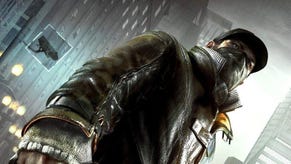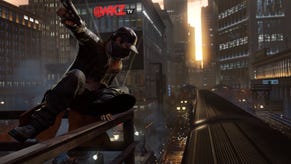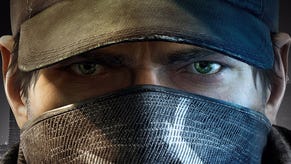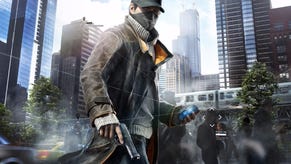Watch Dogs PS3: has last-gen hardware had its day?
Stripped back extensively, the soul of the game is at risk.
Built from the ground up with the new generation of gaming hardware in mind, it's easy to forget that Ubisoft Montreal's new open-world cyber-thriller is actually a cross-generational release, also available for Xbox 360 and PlayStation 3. Multi-platform titles are necessarily built with scalability in mind - it's essential for the PC gaming market - but the question we're interested in today is whether Watch Dogs is a sign that we're finally at breaking point. Should last-gen hardware be left behind by AAA developers? Or does less-capable hardware still offers a viable alternative?
To get to the heart of the matter, we have the PS3 version to compare with Watch Dogs' PlayStation 4 release, the technical strengths of which we've already covered in detail. The Disrupt engine benefits from the newer Sony console's processing power to handle the AI and physics elements of a vast Chicago city sandbox - all delivered at 1600x900 and backed by a stable 30fps. Meanwhile, on PS3 it's fair to say the core mechanics hold together faithfully enough, with all abilities, missions and areas transferring unscathed, but the gloss over the top is significantly pared back and the resulting visuals can be startlingly different at times.
In terms of the base image, PS3 pushes out a native resolution of around 1152x648, reinforced by what appears to be an FXAA solution for edge treatment - the weakest option on PC. But as you can see from our head-to-head video below (and the Watch Dogs PS3 vs PS4 comparison gallery), this is far from the biggest issue with the game's visual make-up.
The biggest step backwards is easily in the lighting department. The opening baseball stadium mission is a great example, with individual spotlights on PS4 illuminating each room with a strong bloom effect. On PS3, this is noticeably pared back and most light sources are stripped out completely from the scene - making for a much darker, dimmer image. It's an unfortunate loss and one that sticks out most vividly in our cross-gen comparison gallery.
It's a completely different story during the day though. A lack of shading causes the PS3 image to be completely over-saturated during indoor areas especially. This is at its most evident at Nicole's house, where even the PS3's basic ambient occlusion isn't enough to offset an overly bright scene. The PS4 version takes advantage of a more thorough shading model that darkens all characters and objects, and while not perfectly natural, it makes the on-screen contrast far more balanced.
As for the shadows themselves - there's no PC preset equivalent to what the PS3 is using. Instead, we have a percentage-closer filtering (PCF) method at play, also recently seen in the PS3 edition of Metal Gear Rising. It's a solution that typically gets use on the platform as an alternative to the dithered shadows on 360 counterparts, delivering sharper shadow outlines to outdoor buildings, trees and characters. It looks stark and lacks subtlety, and while it avoids the dithering artefacts of the PS4 shadows, it comes at the cost of heavy aliasing when viewed up close.
Both textures and shadows are affected by a heavy filtering cascade too, noticeably creeping along the ground just a few paces ahead of Aiden Pearce. Curiously, actual texture resolution is a mixture of PC presets, based on location. At our initial hideout on PS3, for example, the detail on the wall-projected map of Chicago matches the quality of the PC's high settings. However, outdoors pavements and fences fall closer to the garish medium setting - a significant downgrade from PS4.
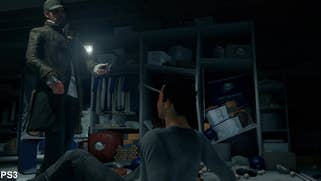

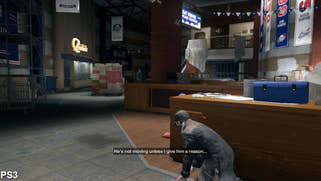
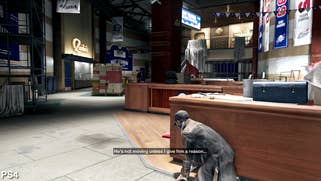


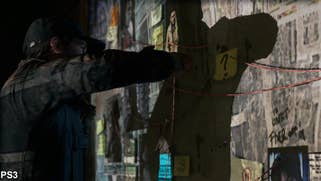

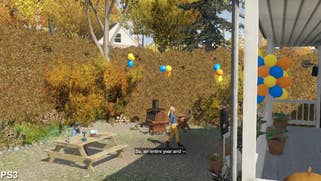
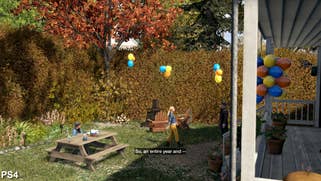



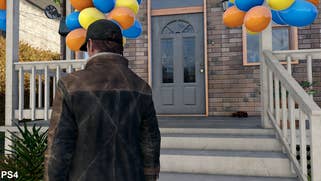


Level-of-detail (LOD) scaling is another big point of differentiation, showing a clear bottleneck on the memory-restricted PS3. While driving at pace through built-up high streets, trees visibly sprout new branches to fill out their appearance, and oncoming traffic sometimes materialises too late to be avoided comfortably. The world persistence is also affected: filling a street with wrecked cars and objects is doable to a similar extreme as the PS4 version, but moving to another road immediately causes all these objects to disappear. The refresh is much more aggressive.
The lowered density of NPCs and cars has an impact on high-speed cop chases too, with fewer obstacles on the roads to divert your escape. It's not a huge downgrade, but the game does look sparser by comparison, even in the most populated downtown areas. Grid-locking the streets with traffic requires a lot more work on PS3, whereas simply stopping a car in the middle of a road on PS4 eventually causes an impressive build-up.
Looking elsewhere, water physics are shifted to a lower-grade model on PS3 that lacks the superbly choppy, wind-torn waves seen during storms on PS4. The seas are calmer, but nevertheless impressively handled given the competition on the console - and reflections of distant lights are still accurate to the surroundings.
However, efforts are made to reduce reflective elements in the world at large, right down to metallic materials on hacker cohort Damien Brenks' shirt, or the birthday balloons around Nicole's house. That being said, character modelling and the city geometry are surprisingly close between the PS3 and PS4. The downgrade comes mostly down to a texture quality drop across clothing, but both in-game and scripted animations are identical.
Unfortunately, even with all these nips and tucks Watch Dogs simply doesn't run well on the PS3. It's a constant tussle for 30fps that rarely resolves itself successfully, and instead the game tends to flatten out at the 20fps line during our tests. This makes for some truly choppy visual feedback that makes handling cars in rapid pursuits feel off-kilter.
On top of that, we're looking at extreme levels of screen-tear for the PS3 release. It's among the most noticeable and constant offenders we've seen in this generation - a real blight on daytime scenes especially, where the artefact can easily be caught on long skyscraper outlines. It's tough going from the PS4's stable 30fps (with very occasional drops of v-sync) to this, and ultimately makes it even harder to justify making do with such a technically hobbled release.
Watch Dogs on last-gen: is it finally time to say goodbye?
The gulf in quality between PS3 and PS4 versions of Watch Dogs is vast, especially compared to the much smaller gap between current and last-gen Assassin's Creed 4. The PS3 version of Watch Dogs isn't an out-and-out disappointment, but it's clear that the Disrupt engine is designed to meet the spec of the PS4 and Xbox One platforms first and foremost - and in many ways, this leaves the older hardware sitting high and dry.
The core game mechanics are hammered in soundly and there's no doubt you can squeeze plenty of good hours of entertainment from this last-gen version - but only if you can accept its many, many rough edges. Chief among them is the inevitable resolution drop to sub-720p, and worse still, an incessant tear-line that runs up and down the screen. If you can't stomach the absence of v-sync in your games, this version is not for you.
An upgrade to the PS4 edition affords a cleaner 900p30 presentation with v-sync engaged most of the time, but the difference from PS3 can be weighed in other more crucial ways. It can't be overstated how radical the changes in lighting are on older hardware - with interior areas appearing much gloomier and sunlit areas far too bright. Most of the world detail on PS3 is consistent, but it feels much less bustling. Coupled with variable 20-30fps performance, Watch Dogs on PS3 is another sign that we're past the point of diminishing returns when it comes to developing for last-gen hardware.
But arguably it's about more than just lamenting the removal of detail or simplification of rendering. This is recognisably the same game as the PS4 version, but it's been nipped and tucked to such an extent that key elements that make Watch Dogs the game it is have been compromised extensively. It's especially evident in the environment - whittle away the detail, reduce the NPC and vehicle count and you're left with a somewhat-barren cityscape. This is a next-gen game stripped down to its basics with some crude side effects, and this is only the difference between a launch period game and its last-gen port. On this evidence, the technical ambitions of AAA game-makers will exceed the failing reach of the PS3 and 360 sooner rather than later.
Certainly, based on the Watch Dogs experience, it's perhaps fortunate that Ubisoft won't be bringing Assassin's Creed: Unity to last-gen consoles this year. We're not averse to these cross-gen releases, mind you, but the people making them will need to be careful. Watch Dogs just about gets away with it, despite significant alterations, but if you take much more away from games that rely on so much bustle and detail, the soul of the game itself may ultimately be compromised, and for us - for anyone - surely that will be a step too far.





